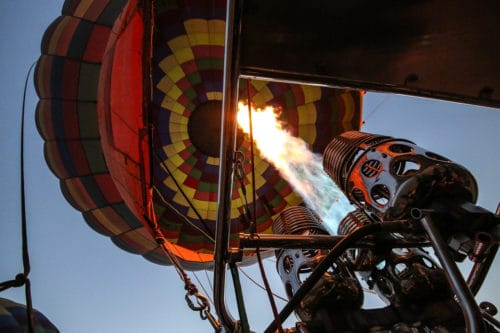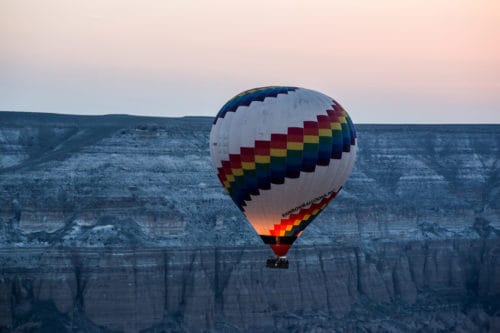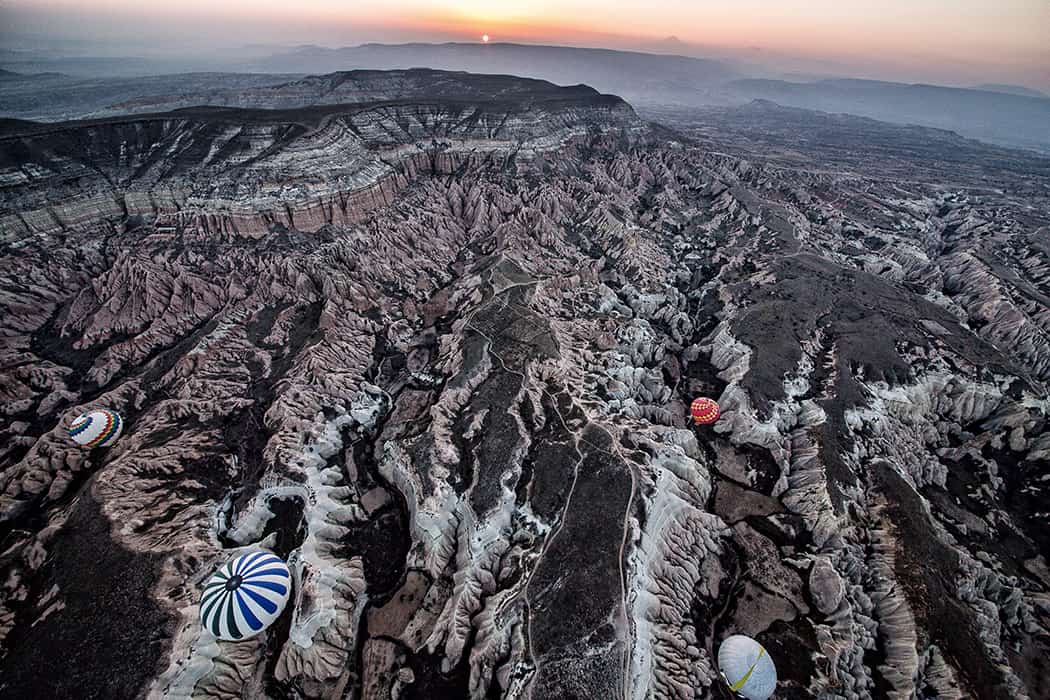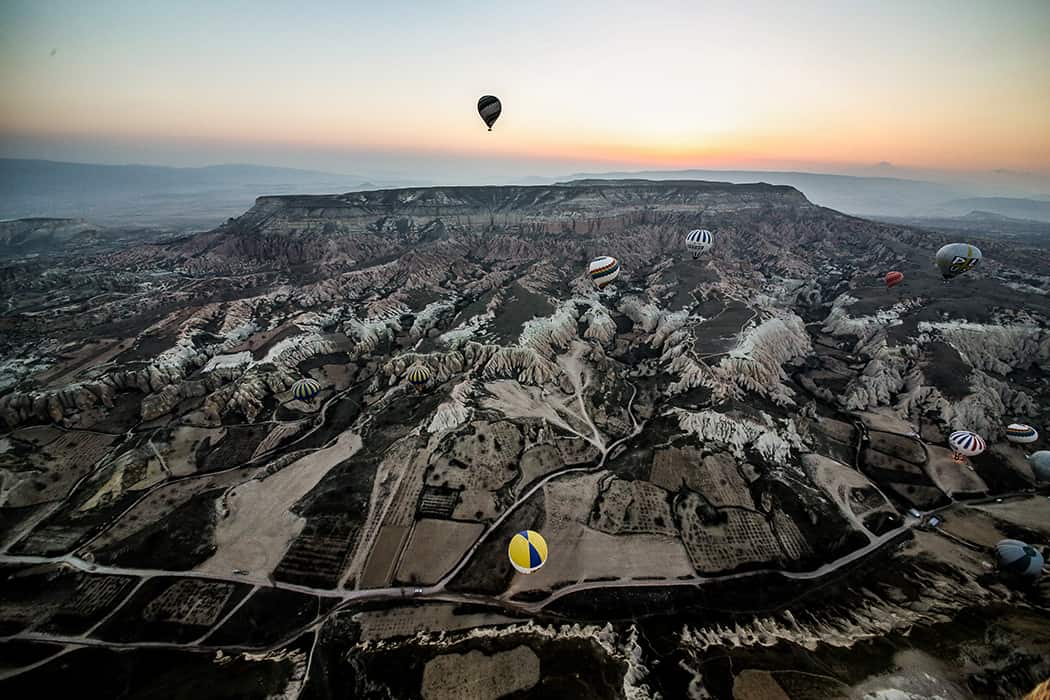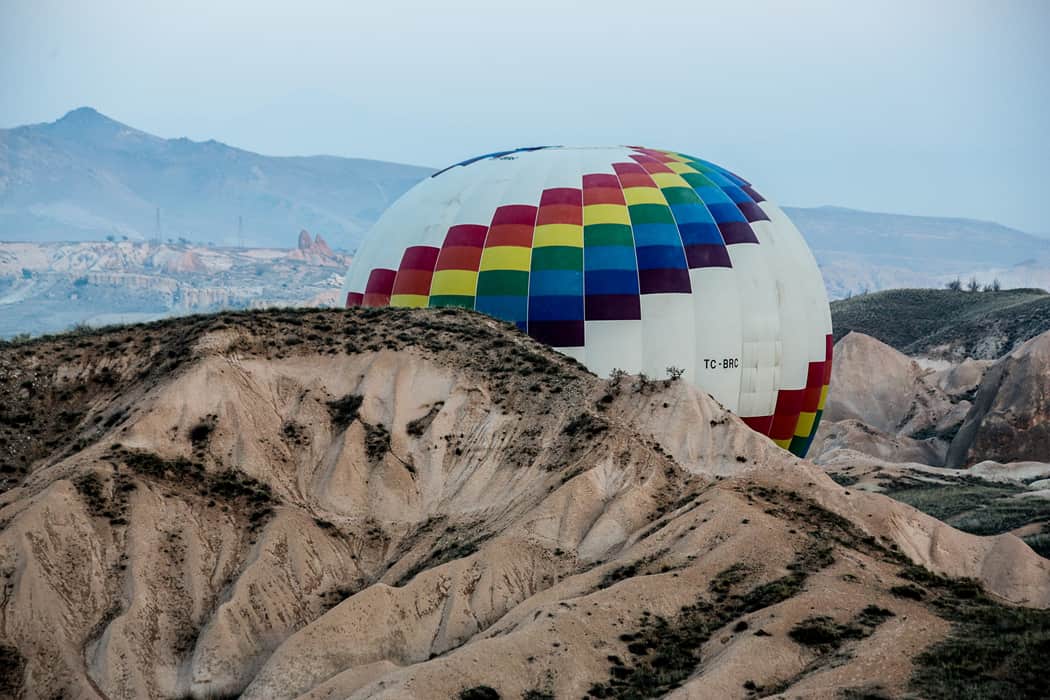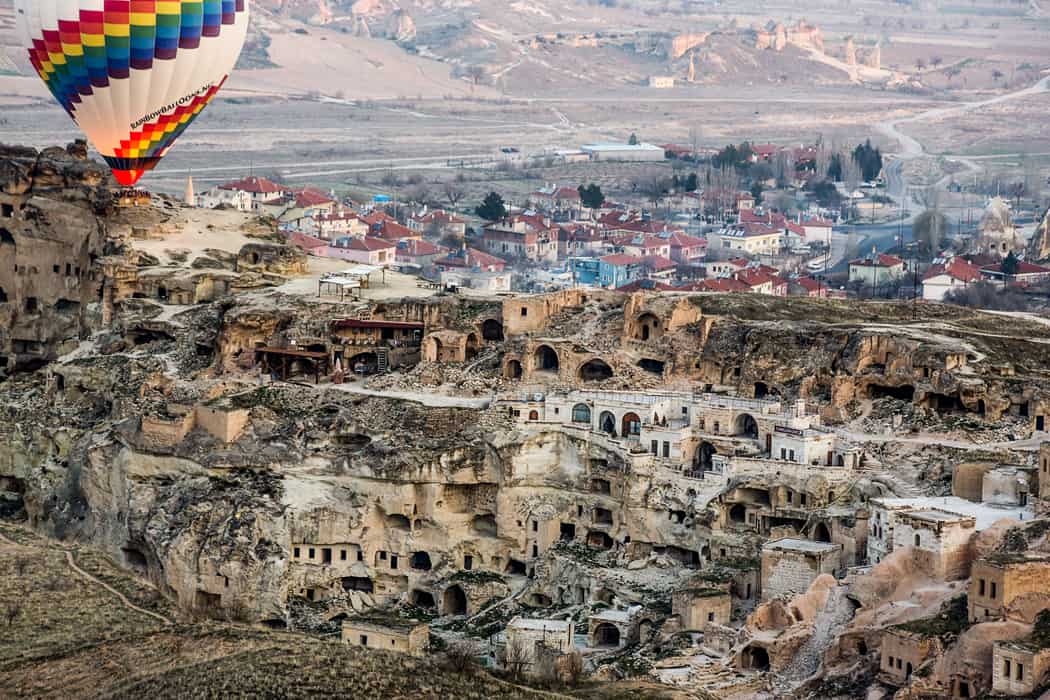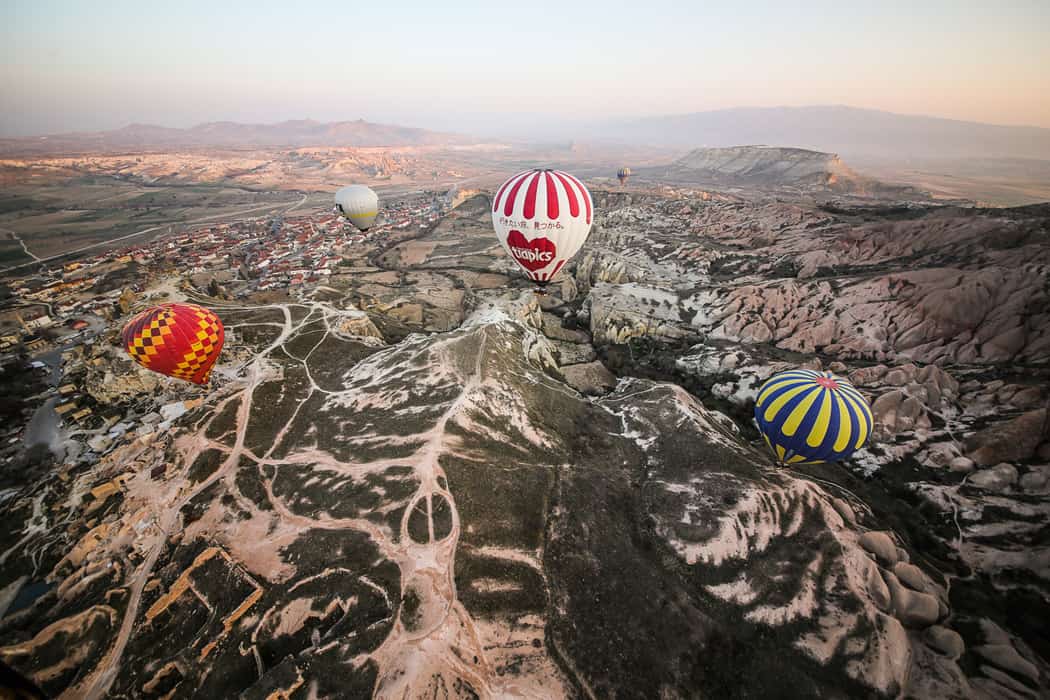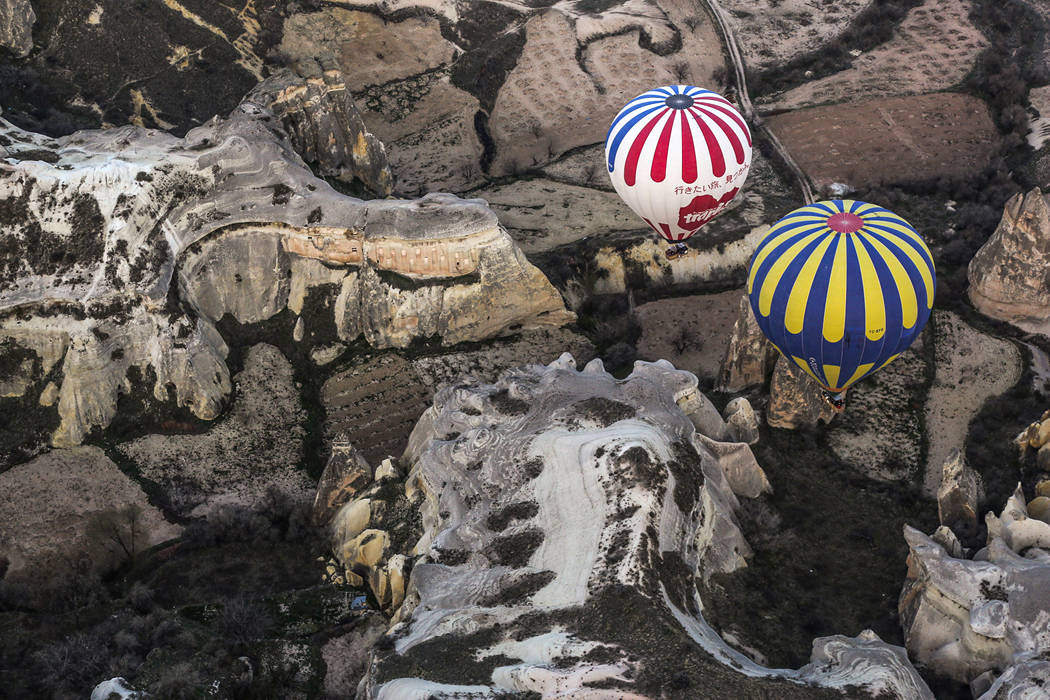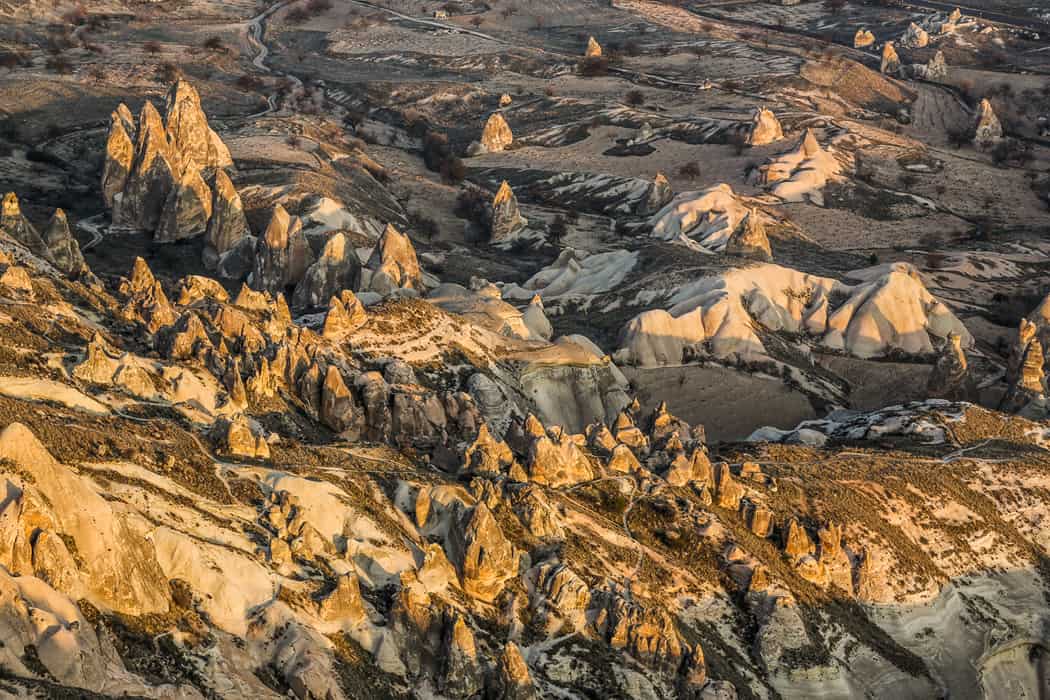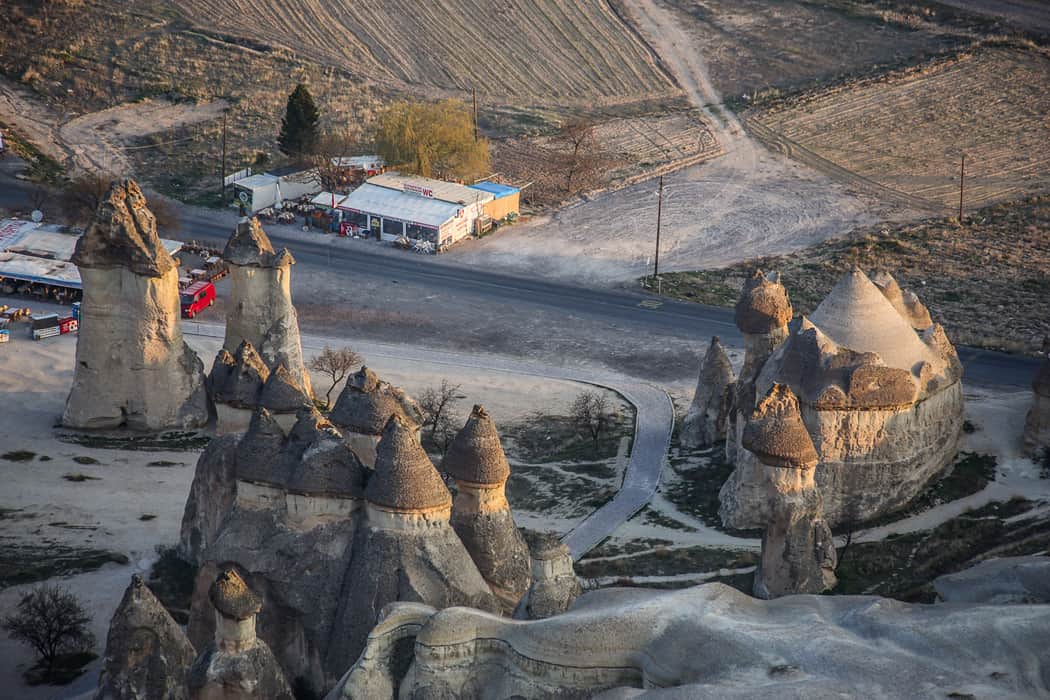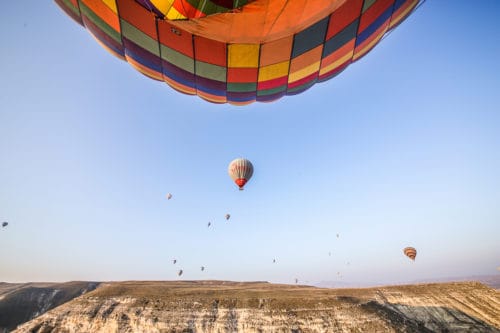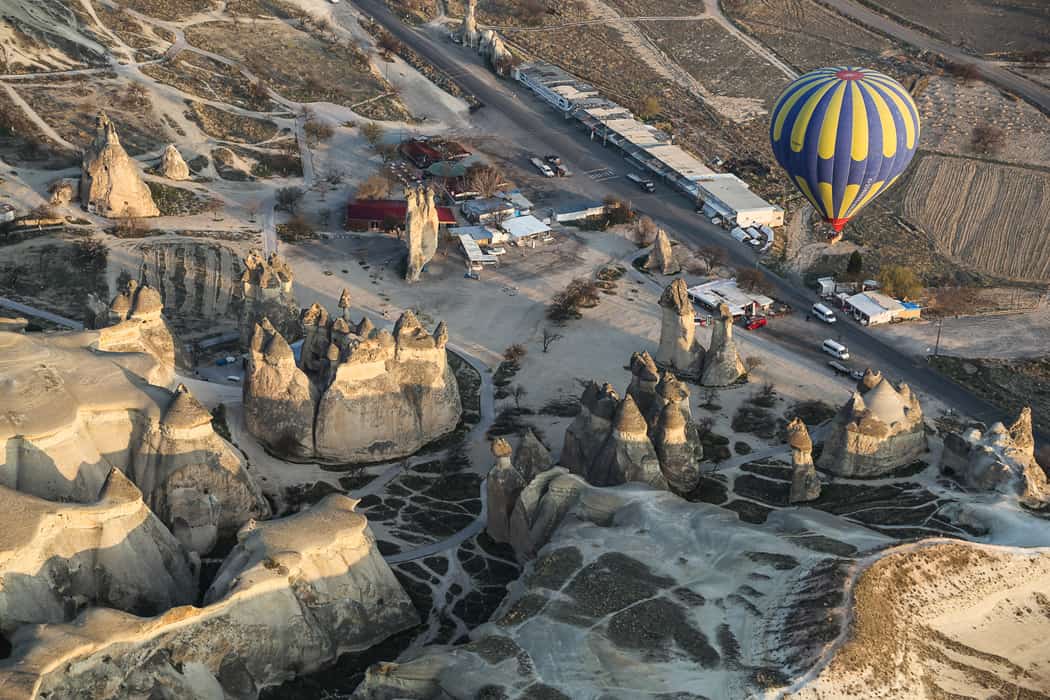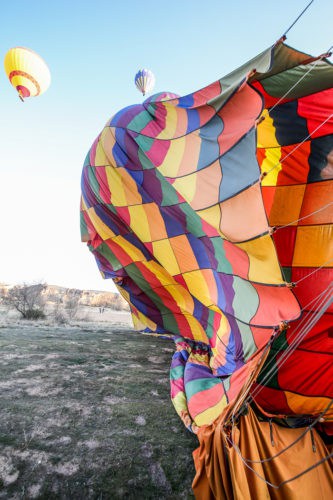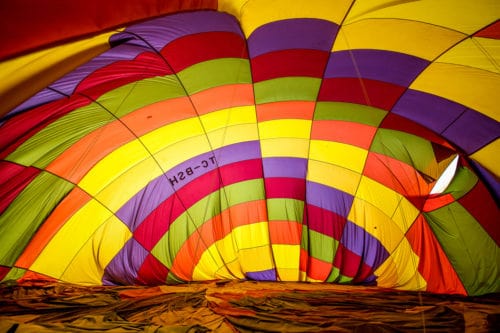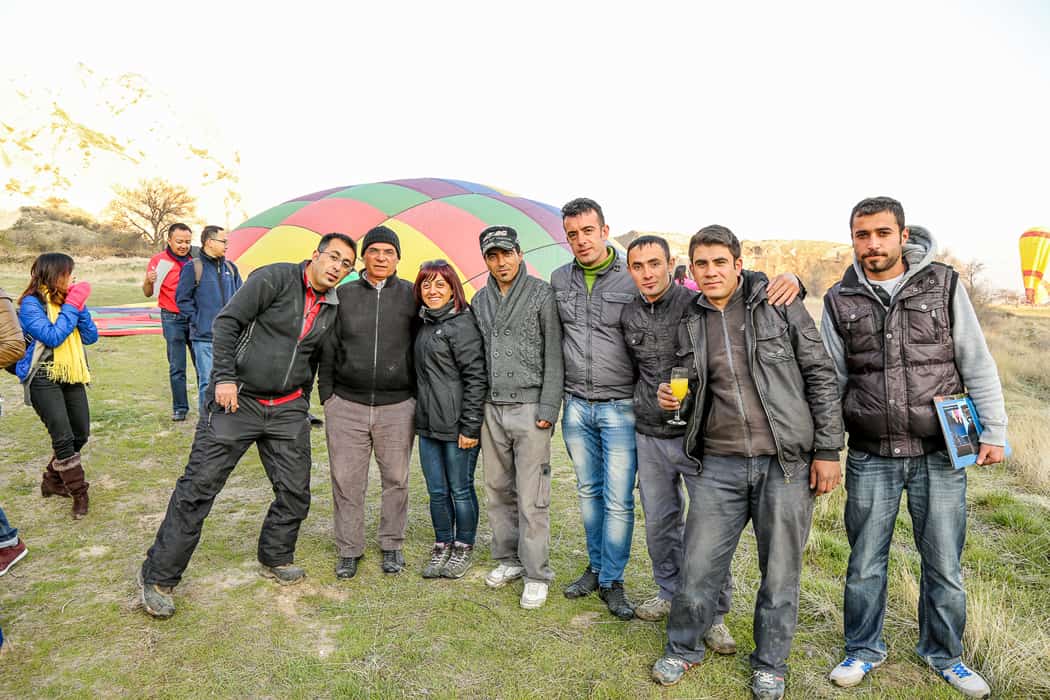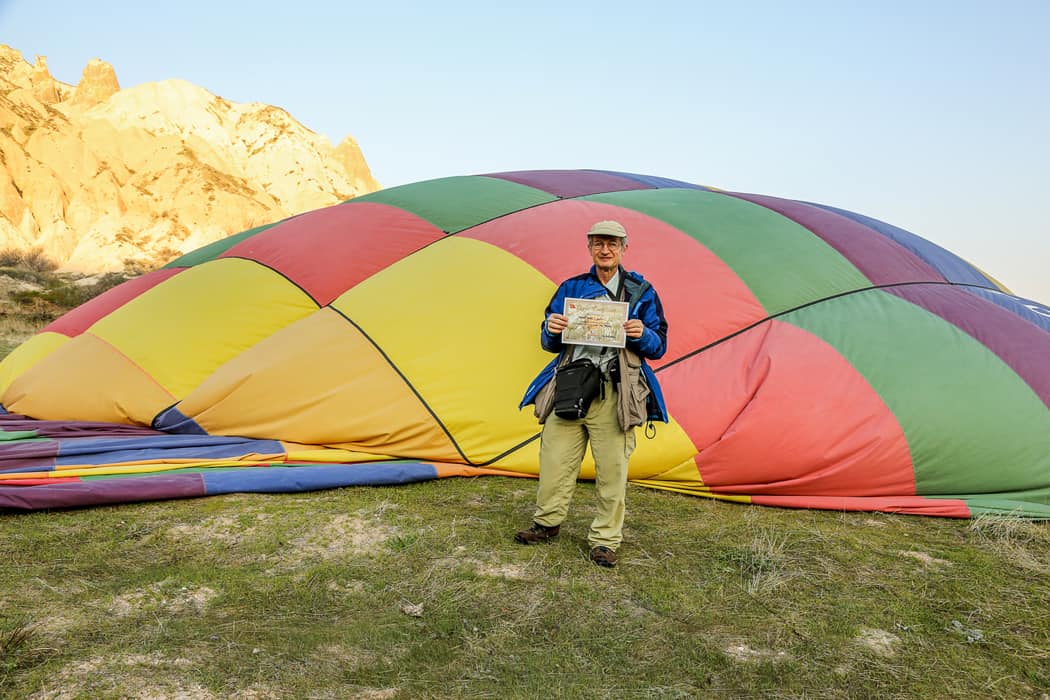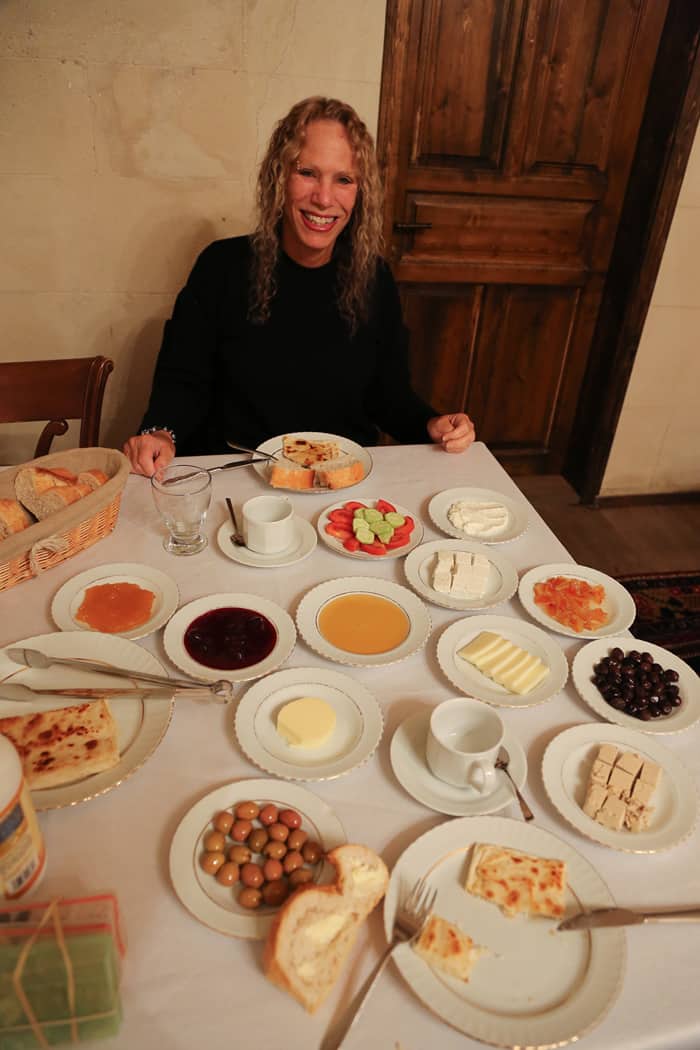Like every writer who contributes to We Blog the World, I’m addicted to travel. I want to experience “everything” when I travel—culture, nature, personal contact, art, food. But I’ve found myself most transported by the geological wonders I’ve discovered. I’ve put the best ones into a book called Earthforms: Intimate Portraits of Our Planet, 119 art photos of geological subjects, with 10 pages of captions explaining the settings, geological history, and something of my experience encountering each subject.
But there are much longer stories to each photograph.
I wanted to include a photo essay that recounts just how I came to that exceptional image (or two or more) that made it into the book. During my round-the-world trip in 2014, during which I visited 12 countries in 10 weeks, we landed in Istanbul from New York, spent a day there sightseeing, and then took an overnight bus to Kayseri, where we rented a car and drove the 40 km to Ürgüp in Cappadocia, staying in the nearby town of Mustafapasha. The morning after our arrival, I got up at 5 am to be picked up at 5:30 for my hot air balloon ride. It was the first great adventure of the trip, April 4, 2014. My companion stayed in bed. It was still dark outside.
After a very symbolic breakfast at the balloon company’s headquarters, we headed out to the site, where our balloon was inflating with hot air.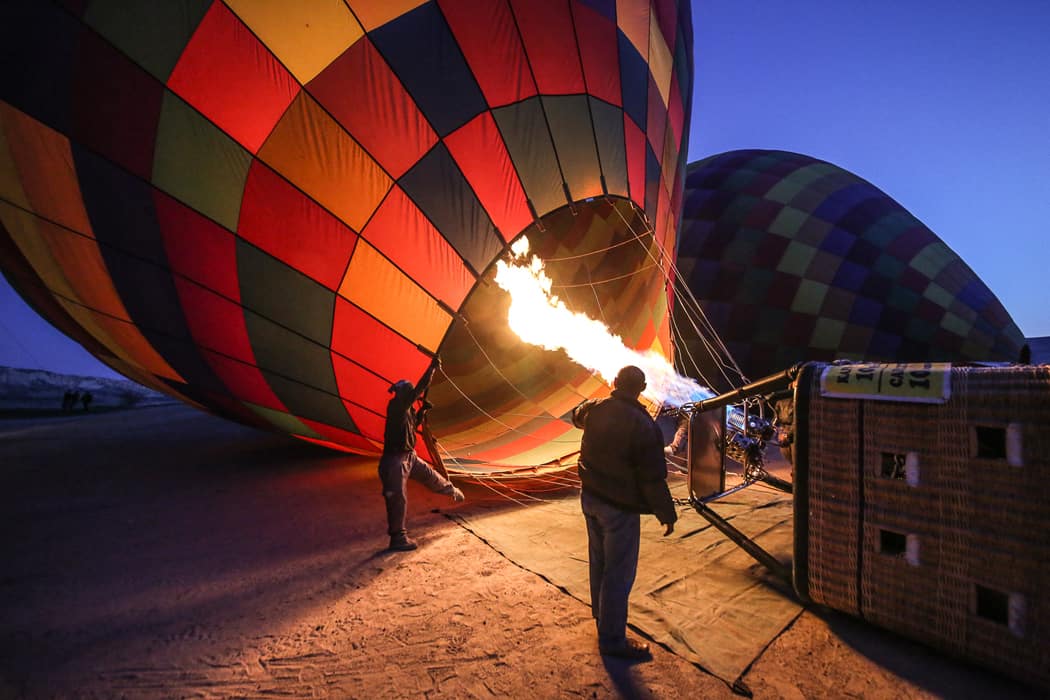
The ascent was thrilling. The sun wasn’t up yet, but close by another balloon was lit up with its burners.
After a few minutes we were between 800 and 1000 feet in the air, and off over the horizon—dawn! (This is the one photo that made it into my Earthforms book.) It was April 4 at 7 am.
The rugged terrain of Cappadocia started to come into view. There’s a website that lists the 10 best balloon rides in the world, and this one is at the top of the list. Easy to see why.
Our pilot ascended and descended according to how much heat he put into the balloon. We drifted with the winds. A company truck was following us on the ground, which I didn’t realize until the end. When we were closer to the ground, we could examine the fabulous formations of the eroded volcanic and sedimentary terrain.
The other balloons in the sky played hide-and-seek with us, competing with the geology for our attention, but the contest wasn’t even close. Still, there were some dramatic moments:
I knew the landforms were volcanic, so I was fascinated to see these oblique sediments. It turns out that the lava and ash from successive eruptions were compressed down, only to be exposed much later through erosion. The reddish band represents a defined time period of sedimentary in-bedding. Its straight linearity offers an ironic comment against the haphazard eroded conical structures that seem to contain it. Usually it’s the other way around: the container is regular and the contents more free-form, whimsical or chaotic—as in an abstract painting in a rectangular frame.
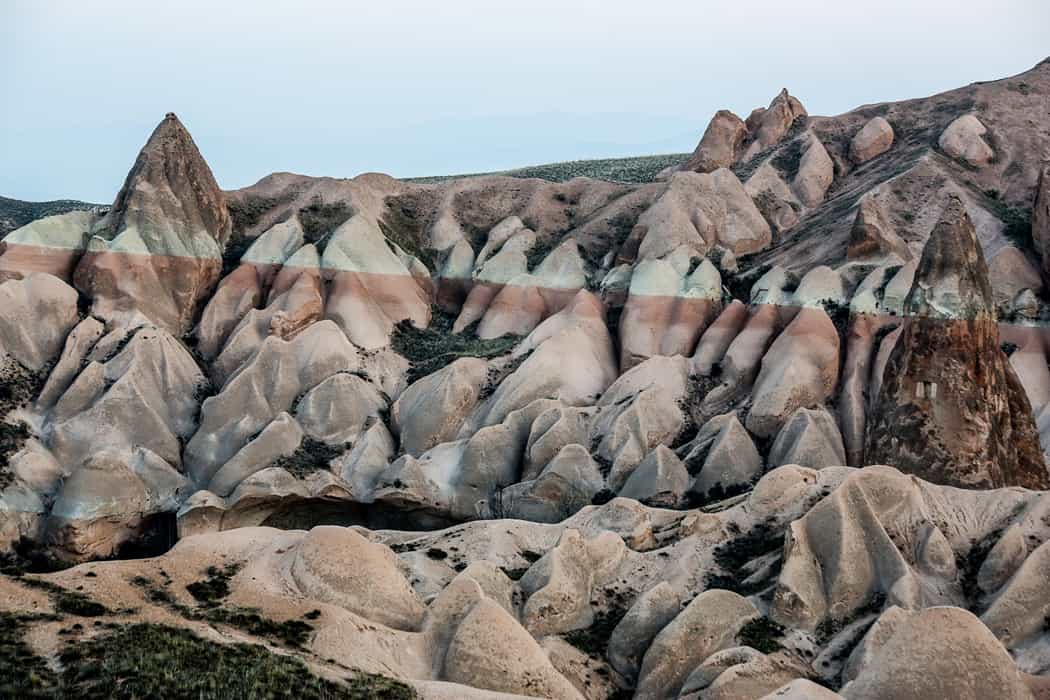
In this next image, looking down on another balloon’s gondola, you can get an idea of the situation I was in: 12 passengers and one pilot in a small rectangular space, most of us jockeying for a spot on the outside:
An outstanding feature of Cappadocia’s soft volcanic terrain is how much various dwellings, churches, and monasteries have been carved into the rock. It’s all over the place, and many of the sacred cave churches have elaborate polychrome frescos. Whole villages nearby were carved into the rock. In the following few days we explored churches dug into cliffs and monasteries in hillsides. Notice that the balloon in the photo has its burners on.
I counted 36 balloons in this photo. Each one belonged to a different company.
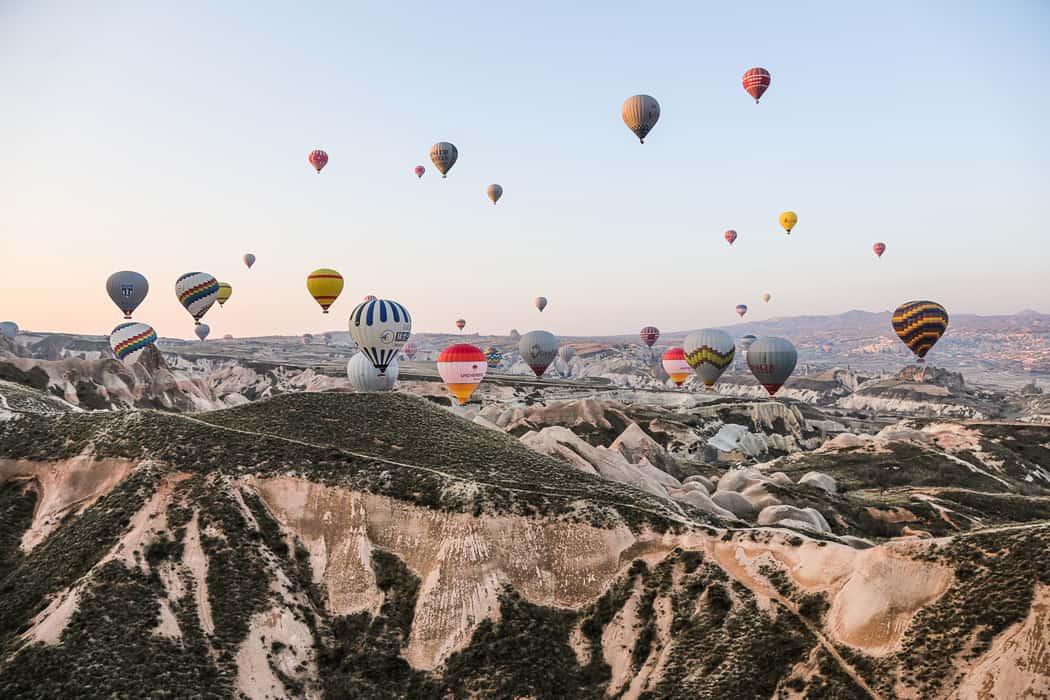
As the day got brighter, the ever-changing terrain revealed more of itself as a serious, mute record of geologic and human history, forming the background for the boffo circus designs of the balloons.
Volcanic ash and mud covered the area from eruptions 30 million years ago. This was compressed and eroded into a soft rock called “tuff,” out of which the structures we see today were formed. Pompeii is also formed of tuff.
Which is more bizarre, the rock formations or the balloons?
Here you can see the conical formations that are so typical of Cappadocia, usually referred to as chimneys. There’s more light and no balloons:
Here the vertical structures are less conical, but they have cap rocks on top, sometimes called “fairy chimneys.” They were clearly deposited from a different source than the underlying supportive rock. Imagine living like the people in those buildings, amidst these giants.
Looking up at our balloon, so that it frames the sky.
A convocation of balloon, modern buildings, and fairy chimneys:
Starting to come down now, we planed over furrowed fields before the sprouts had materialized.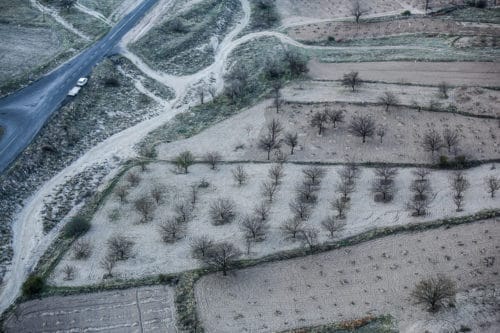
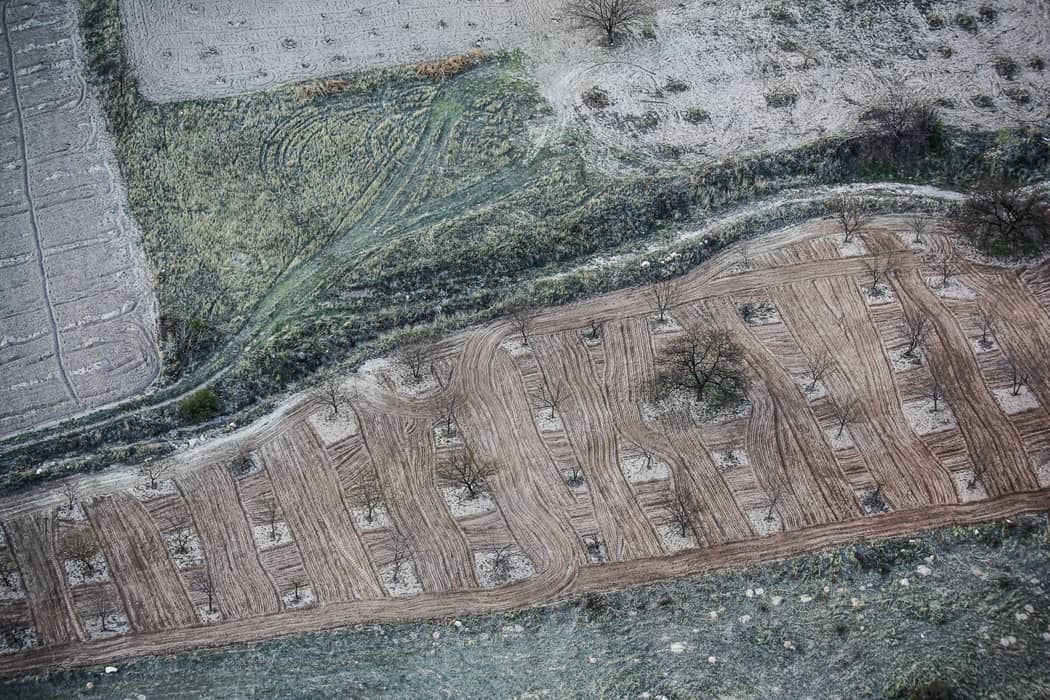
We landed in the back of a pickup truck, and the balloon began to deflate on the ground.
But before it was completely flat, I ran inside to fill my frame with its colors.
My co-passengers. Note that the second from the right one is holding the mimosa that everyone got.
We were also issued certificates. Here I am holding mine. I wasn’t paying much attention to fashion—only utility, with my photo vest under my blue coat. My extra lenses were in cases attached to my belt.
Back at the hotel, we were served a REAL breakfast—breads, cheeses, olives, sliced vegetables, several types of jam, and Turkish coffee. Here’s Barbara, already at the table. It was about 8:30 am.

